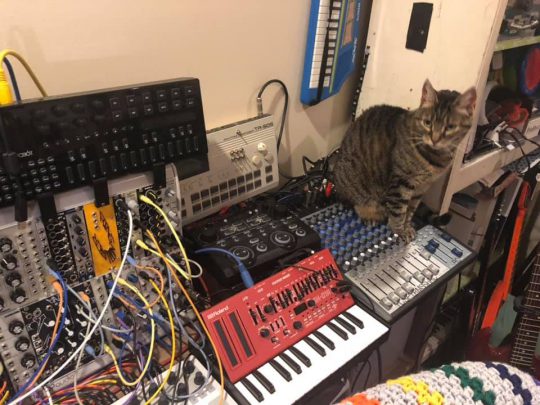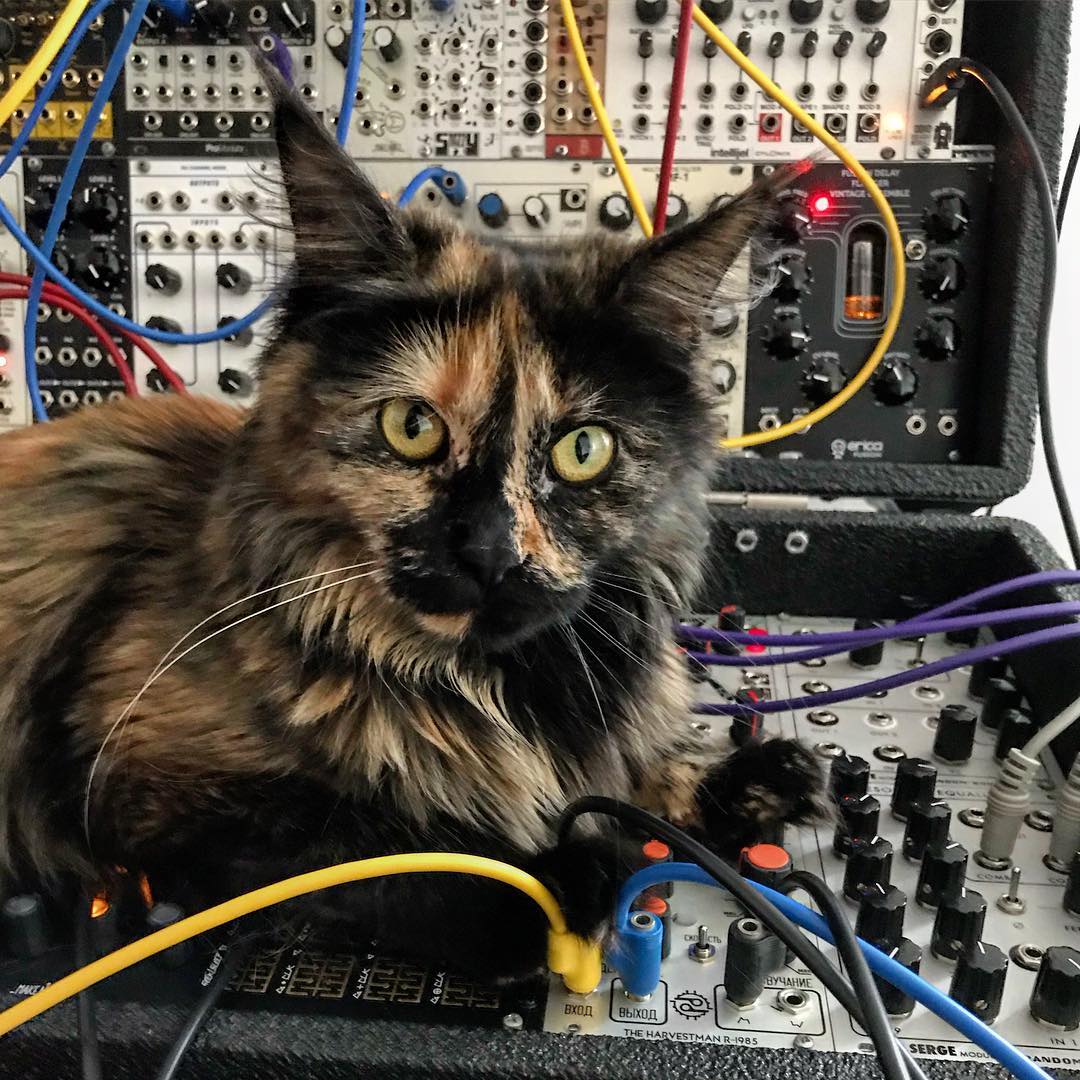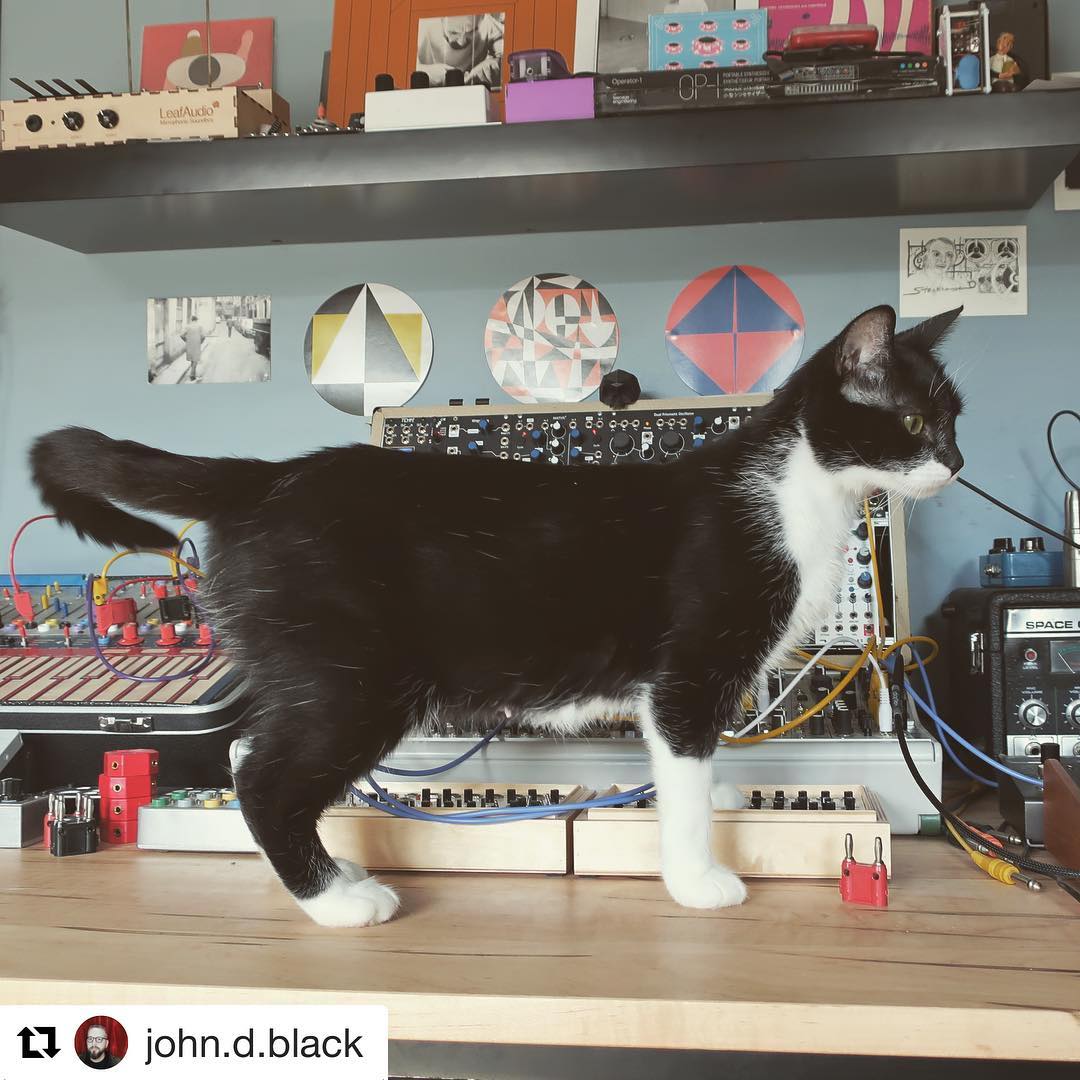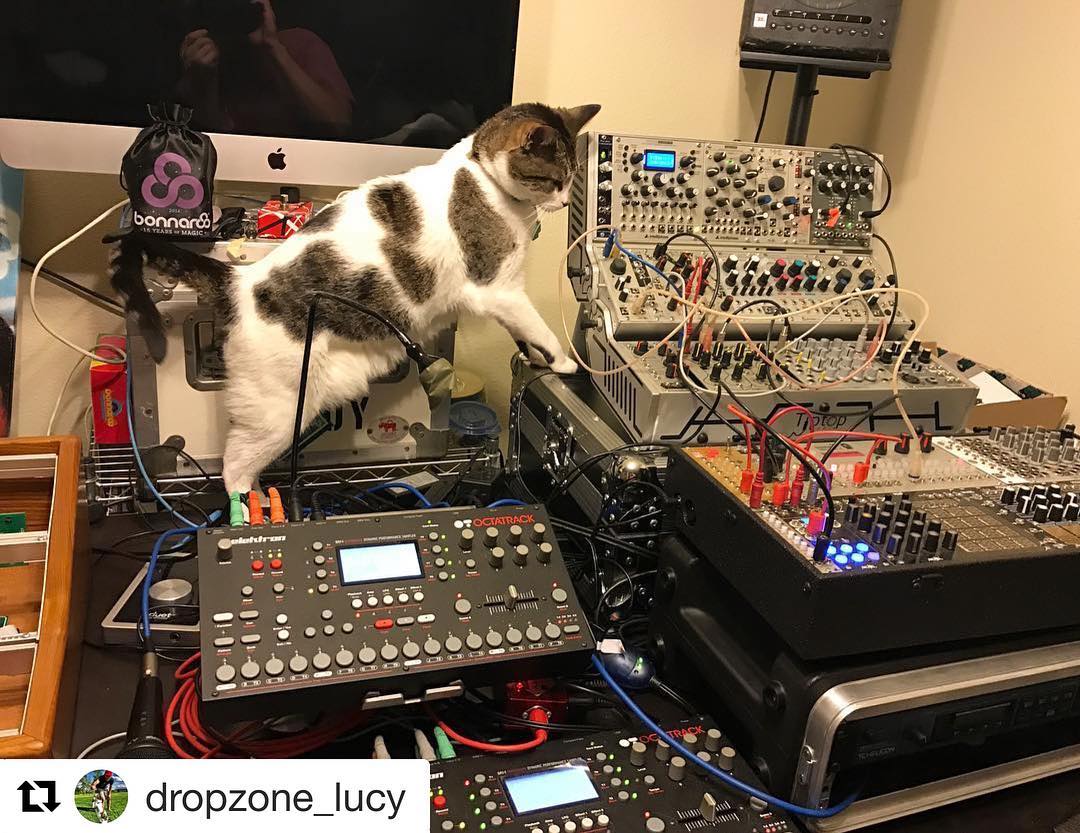
Zoe sits atop a mixer next to a red Roland SH-01 and a large modular synthesizer. The mixer seems to be her preferred spot.
From Mike Weakley via that same thread on Synthesizer Freaks from yesterday’s post.


Zoe sits atop a mixer next to a red Roland SH-01 and a large modular synthesizer. The mixer seems to be her preferred spot.
From Mike Weakley via that same thread on Synthesizer Freaks from yesterday’s post.
Nemo the cat plays a modular synth via Novation and Arturia controllers 😺🎛. From Stefano Girola (@squarewaves) on Instagram.
Cute cat with a modular system featuring Bug Brand and Serge-inspired modules. From Shadow Justice Crew on Instagram.

Cute maine coon kitten with modular synthesizer. I see a Make Noise Rene peeking out from under her, next to Harvestman and Serge modules.
From chichi_response on Instagram.
chichi_response
I will make the sounds for you
You can see a previous post from chichi_response here.
Handsome Marcel returns, and enjoys participating in a modular-synth session with his human polynominal. Both are longtime friends of CatSynth and you can see their previous posts here.

This cat knows how to frame his poses purrfectly 😸
Most of the modular is obscured by this cutie, but we do espy a pair of KOMA Field Kits, as well as a Buchla Music Easel.
From catsofmodular on Instagram.

Cure cat with an Elektron
Helping dad get unpatched for his gig tomorrow. 🎛😻 #catsynth #synthcat#modularsynth